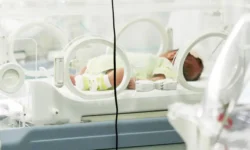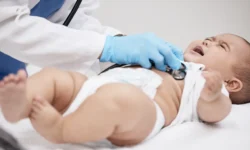Developmental Milestones and Early Intervention
Early intervention and treatment has often shown to significantly improve the lives of children who are affected by CP. However, sometimes it is not obvious when a child is born that a child has CP. This presents a problem: early intervention is critical, but how can you spot CP before an official diagnosis?
In this post, we will break down the developmental milestones that parents and medical providers should be monitoring. If a child is showing these symptoms, it’s a good idea to go speak with a doctor about a potential screening and evaluation for CP.
0 to 6 Months Old
In infants younger than six months old, there are several symptoms that may be an indication of CP. These symptoms include:
- The baby struggling to hold her head up
- A limp feeling when picked up
- A stiff feeling when picked up
- Constantly arching the back and seeming to push away from you while being held
- Legs that cross and scissor while being picked up
- Seizures
- Excessive fussiness
- Difficulty swallowing and feeding
Getting help for a child with HIE or Cerebral Palsy
can make a big difference
Because early intervention is often key to helping improve a child’s wellbeing, it’s important to act swiftly. At the Brown Trial Firm, our Houston birth injury attorneys can help you investigate your case, find answers to your questions, and determine whether you are entitled to compensation. We offer case reviews at no cost or obligation. Many birth injuries that cause cerebral palsy could have been prevented.
6 Months to 10 Months Old
In children who are between 6 and 10 months old, symptoms may include:
- A lack of strength or coordination
- An inability to roll over
- Being unable to clasp her hands together
- Struggling with being able to bring her hands to her mouth
- Preferring to use only one hand for grasping, leaving the other hand in a fist shape
- And inability to hold her head up
- Minimal social interaction with parents and loved ones
- Trouble grasping and holding onto toys
10 Months or Older
Beyond 10 months, here are some other common symptoms of CP:
- A tendency to drag one side of the body while crawling
- Refusal to crawl, preferring to scoot around on the butt or with knee hops
- Lack of communication development, such as not experimenting with making sounds or not understanding simple words like “no”
- Lack of emotional development, such as not responding to parents making happy or sad faces
Importantly, if your child is not hitting common developmental milestones, this may be a sign of CP. If you think your child may have CP or other related conditions, don’t wait–seek out help from a doctor immediately.
In our next section, we will discuss how Cerebral Palsy is screened for and diagnosed. Read on to learn more!
Sources:
What is Cerebral Palsy? | CDC. (2018). Centers for Disease Control and Prevention. Retrieved 31 October 2019, from https://www.cdc.gov/ncbddd/cp/facts.html
Developmental Milestones. (2018). Centers for Disease Control and Prevention. Retrieved 31 October 2019, from https://www.cdc.gov/ncbddd/actearly/milestones/index.html


